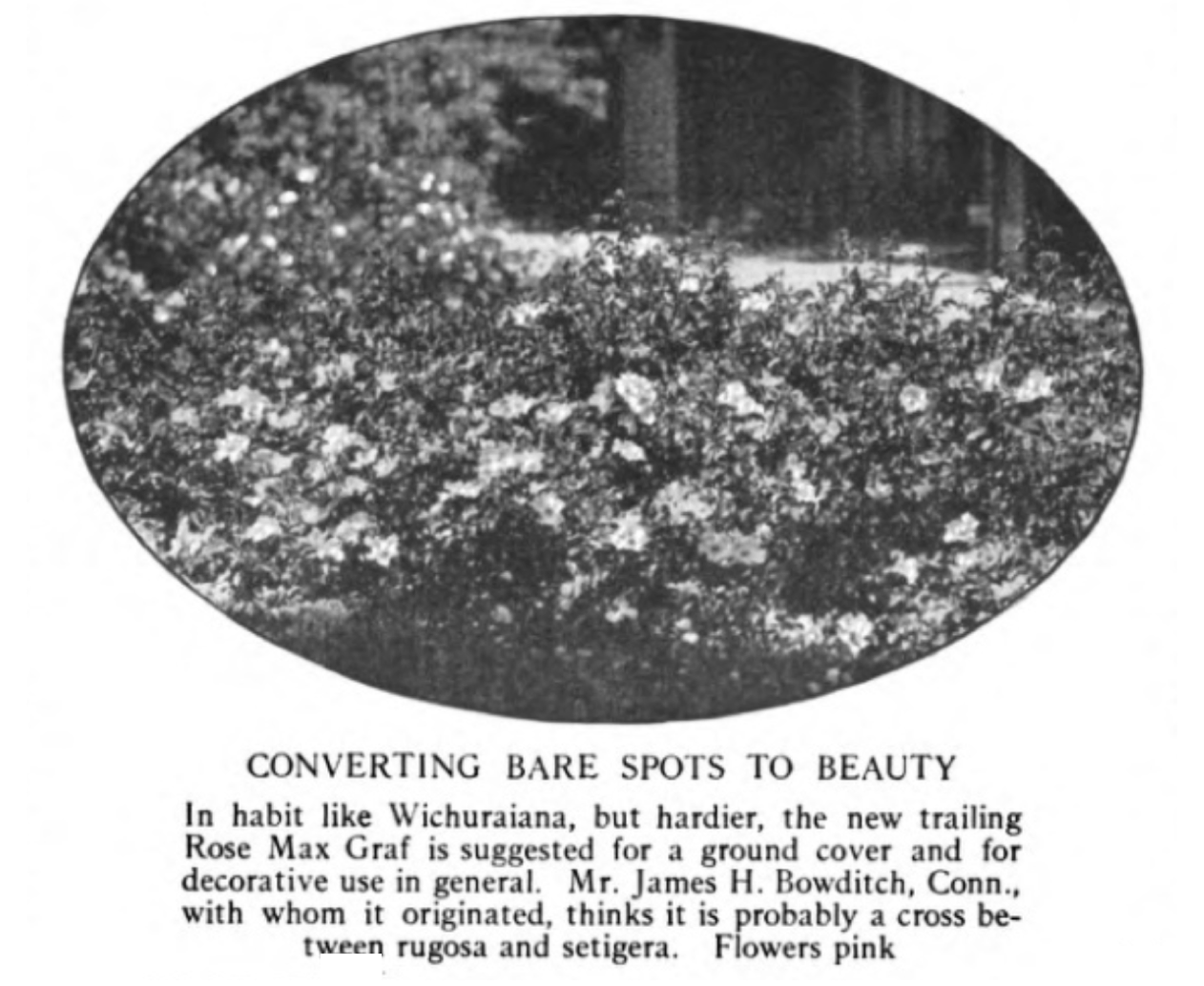New trailing rose Max Graf.
Egan, William Constantine. "New trailing rose Max Graf." Garden Magazine 35, no. 1
(March 1922): 29.
[https://library-projects.providence.edu/rosarium/view?docId=tei/rg0059.xml]

A new hardy trailing Rose which, I think, will be used by landscape gardeners as a ground cover and over embankments has been flourishing in my garden and is worth a record. It made its début as a chance seedling in a Connecticut nursery, and was named Max Graf after the foreman who discovered it. Only the insect that pollinized its parent and the bird that distributed the seed know its origin, but a study of the flower and foliage seem to point to a union of the blood of the rugosa and Wichuraiana, both of which were growing in the nursery. The comparatively small and shining foliage bespeaks its relation to the latter, and its rugged aspect indicates a relationship to the rugosa, while the flower—two, to two and a half inches in diameter—resembles the best pink form of that sturdy shrub.
Max Graf is a June and July bloomer, at which time it is completely covered with bloom, but even when not in flower it makes a handsome show on account of its clean, deep green, shiny foliage which remains in good condition until frost—its beauty unmarred by attack of mildew, black spot, or insect. The rugosa blood gives a constitution hardier than Wichuraiana which often freezes back here at Highland Park on the shore of Lake Michigan.
The new shoots of the hybrid start upward and at a height of some two feet, arch over, finally reaching the ground on which they trail ten or more feet, rooting at the joints, but not quite so freely as Wichuraiana. Where the latter is perfectly hardy, a combination planting of the two should make a handsome mass.
Trained up and used as a "pillar" Rose, Max Graf should be a boon to Rose lovers living in a climate where the more tender climbers cannot be grown without winter protection. Fortunately the Dreer Co., and some of the commercial growers have seen and appreciated the capabilities of this Rose and offer it, so that it is procurable through the regular dealers.

